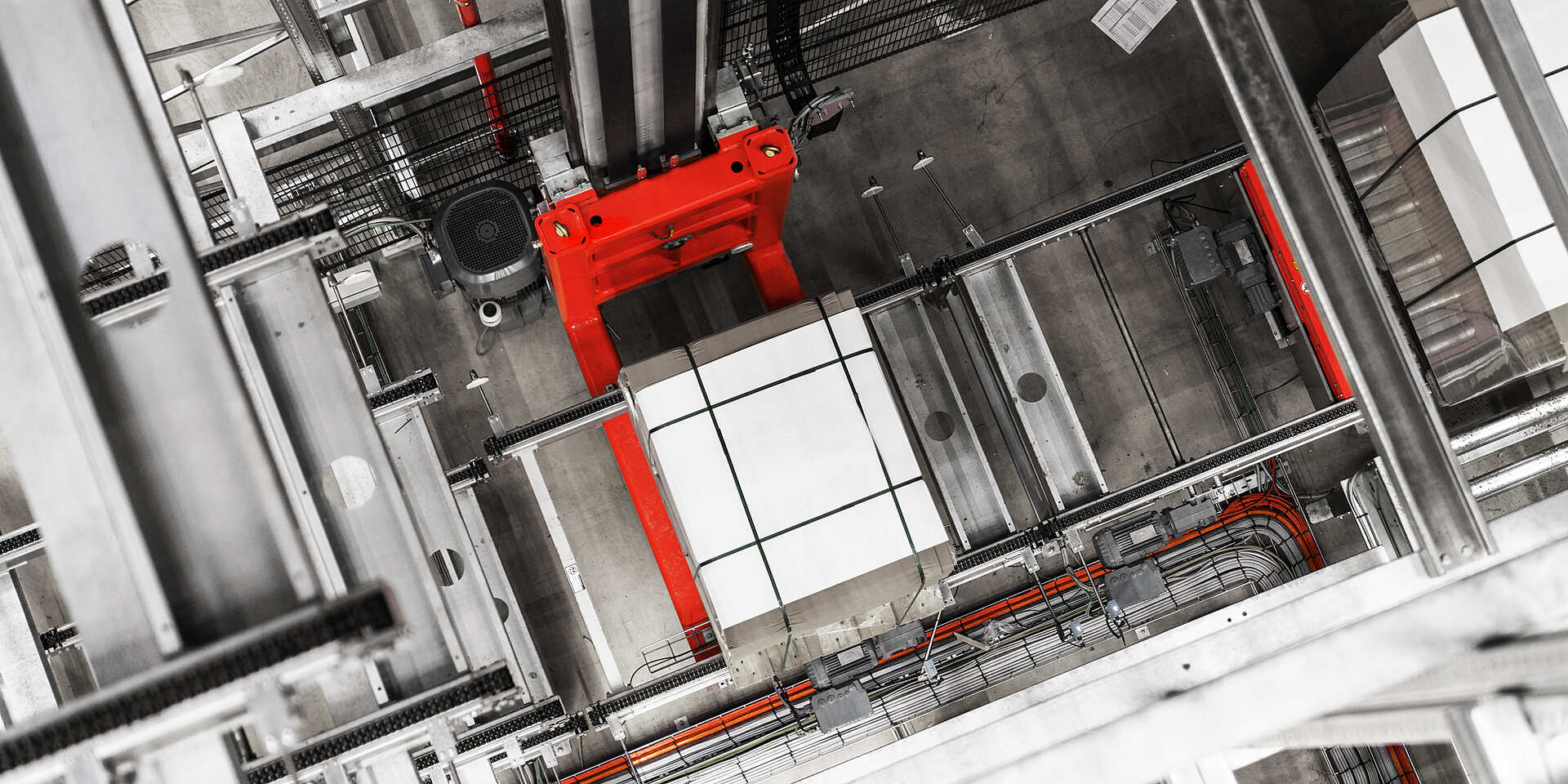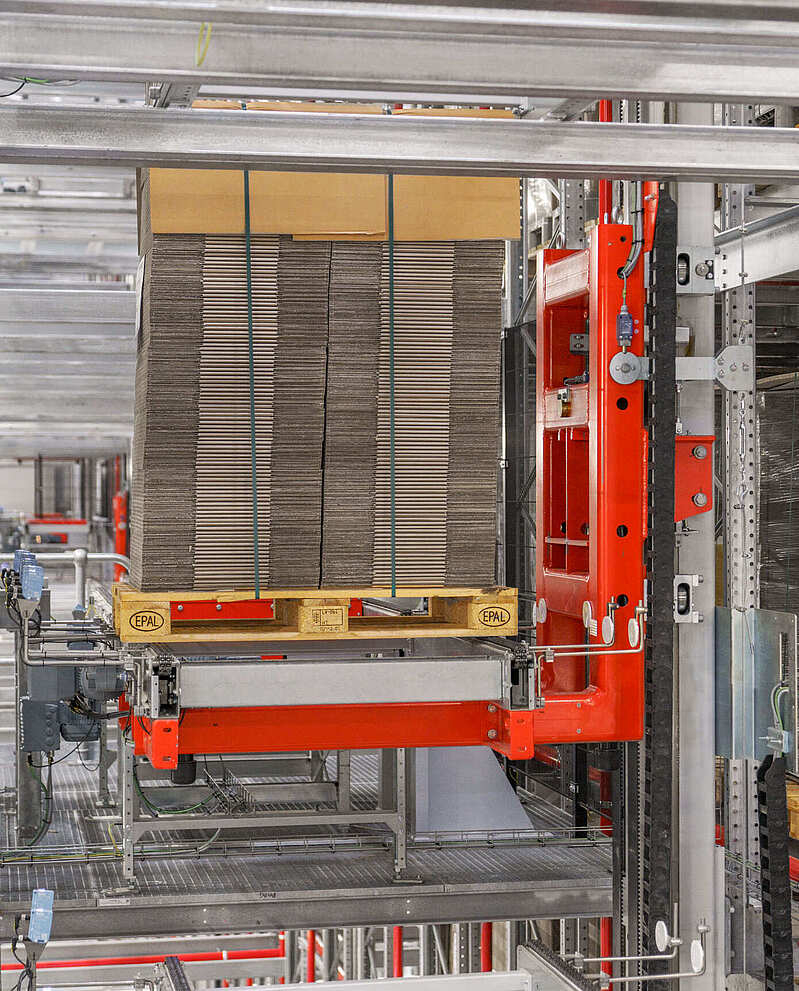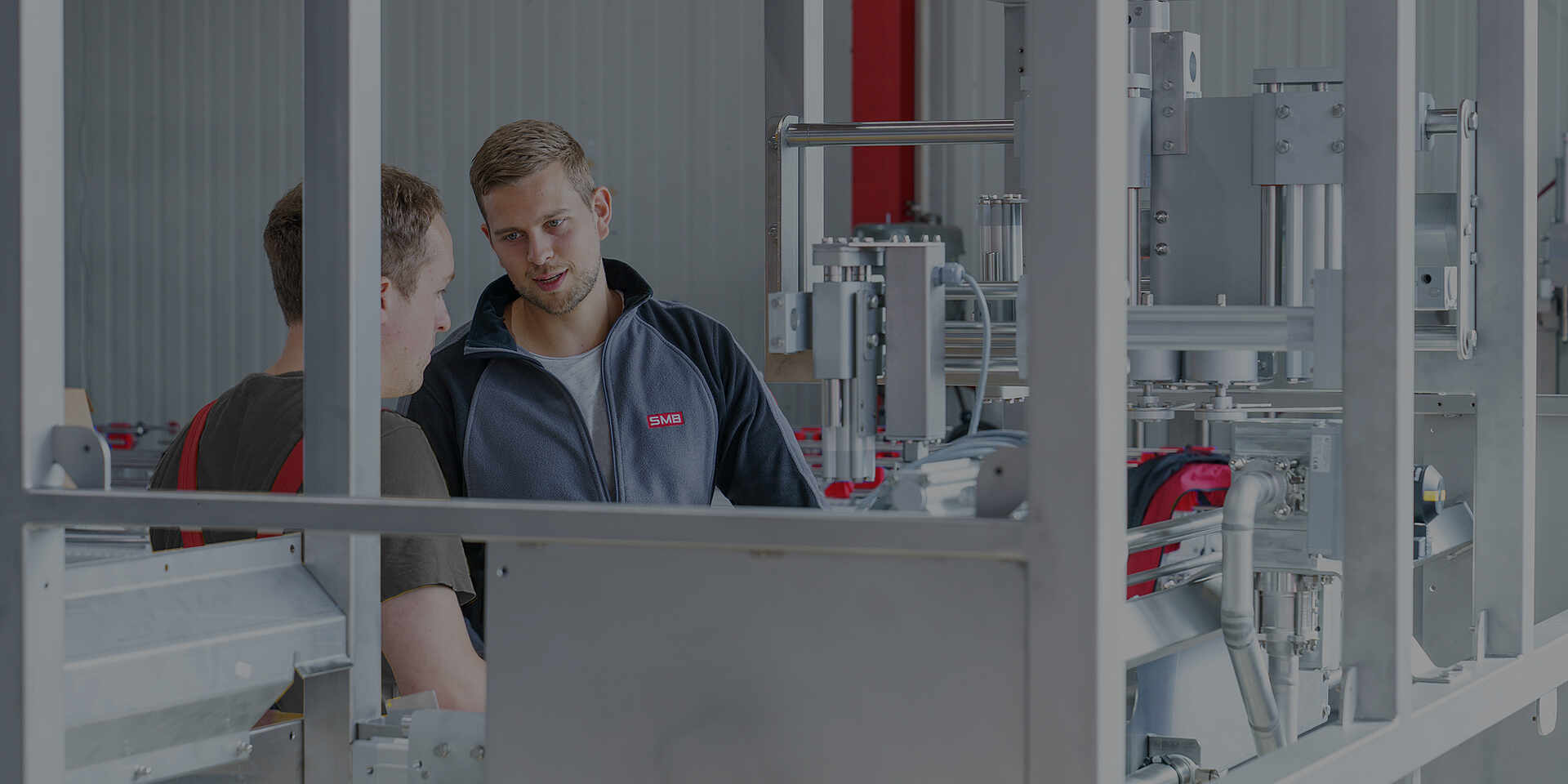Types and Applications of Vertical Conveyors
Vertical conveyors, also known as vertical lifts or pallet-lifters, can operate either as continuous conveyors—following the paternoster principle—or as stop-and-go conveyors, similar to traditional elevators. They are designed to transport items such as drums, canisters, or pallets vertically to different levels.
There are various types of vertical conveyors:
- Pallet Conveyor Elevators or Pallet-Lifters
- S- and C-shaped conveyors
- Paternoster conveyors
- Custom designs
Since pallet lifters are responsible for raising and lowering goods to different levels, they are essential in the full automation of the warehouse. They are tailored to the specific items being transported, such as pallets, and are primarily used in warehouses. Additionally, they move pallets to buffer zones or other operational areas. To maximize the automation of your internal logistics, vertical conveyors are often integrated with other conveyor systems, such as roller or chain conveyors, facilitating smooth transitions to and from the vertical conveyor.
Vertical conveyors are frequently integrated into newly developed automated warehouse systems but can also be added as standalone components to existing operations.
The SMB vertical conveyor reliably and efficiently manages multiple levels of height. The compact design ensures stability and allows for the transport of heavy pallets.


